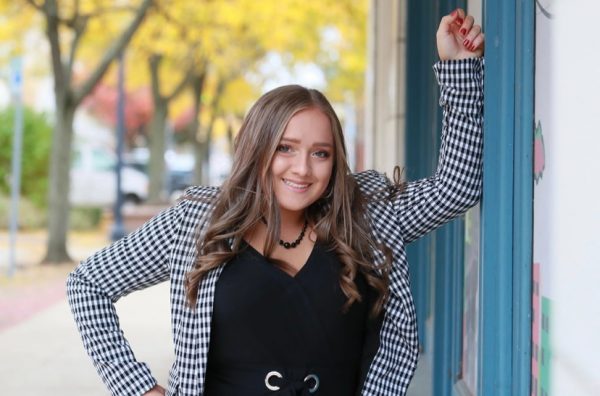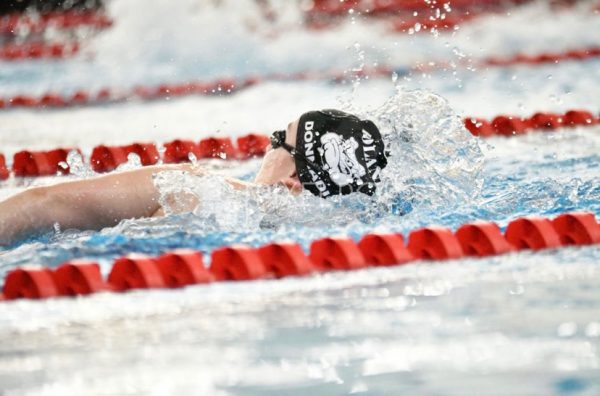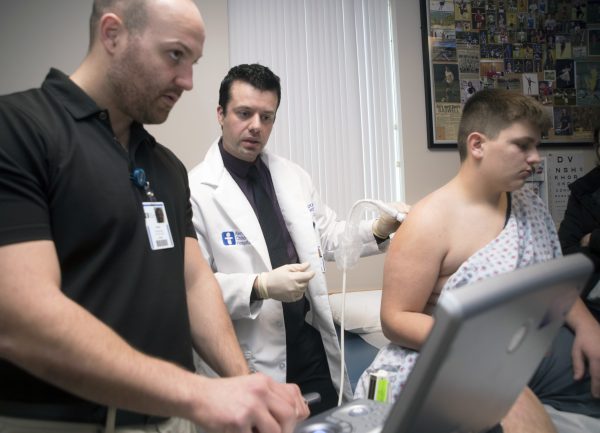
Haley experienced shoulder pain as a competitive swimmer, but is now pain free thanks to an ultrasound-guided injection she received at Akron Children’s Sports Medicine.
They say practice makes perfect so, as a competitive swimmer on the Poland Seminary High School swim team, Haley Donnadio did just that. Every swim season since she was a freshman, she practiced 2 hours a day, 6 days a week. She swam lap after lap to build strength and endurance but, as her senior season took off, so did a familiar pain in her shoulder.
“My shoulder started bothering me my sophomore year and again during my junior year. I got it looked at and did everything doctors told me to do to help with the pain – rest, therapy, armbands, massage and compression,” said Haley. “It seemed like it would work for a while but, by my senior year, the pain in my shoulder was causing numbness in my finger tips.”
As a mid-distance swimmer – 200 freestyle and 200 backstroke – Haley put in hundreds of laps each week so she was ready to compete. Although her season ended on a high note, her shoulder pain didn’t stop. A visit to the sports medicine department at Akron Children’s brought clarity and a solution – ultrasound-guided injection.
Zaid Khatib, MD, a sports medicine physician at Akron Children’s, found the source of Haley’s pain was due to an impingement in her left shoulder that was causing the inflamed soft tissue to pinch against the bone every time she raised her arms above her head. So, as a swimmer, every time she took a stroke, which was often.

Haley put in hundreds of laps each swim season, resulting in a repetitive stress injury in her shoulder.
“Repetitive stress injuries are common in young athletes who specialize in a sport due to the frequency of motion, rapid increase in training volume, and inadequate recovery time. This year, due to COVID lockdowns, we’ve seen a lot of stress injuries occur when kids push to make up for lost time but their joints aren’t conditioned to handle the load yet,” said Dr. Khatib. “While rest and rehab are critically important to caring for repetitive stress injuries, ultrasound-guided injections have become an excellent option for athletes dealing with chronic pain.”
Although Haley’s season was over, Dr. Khatib recommended more physical therapy or an ultrasound-guided cortisone injection to relieve the pain and inflammation. Having already tried years of physical therapy, Haley opted for the injection.
Using a small probe pressed against the exterior skin of her shoulder, Dr. Khatib was able to see on a video monitor where scar tissue, joints and tendons met and where the problem area existed.

Dr. Zaid Khatib and Dr. Derrick Eddy care for a patient using an ultrasound to target the source of pain before placing an injection.
“The ultrasound allows us to avoid adjacent nerves or blood vessels but, more importantly, helps us find and accurately target the precise source of the pain,” said Dr. Khatib. “The injections not only relieve tendon and joint pain in patients, but also helps break the cycle of injury by controlling inflammation, restoring motion and mechanics, and tolerating physical therapy better.”
Today, pain free, Haley is a freshman again, but now as a full-time college student where swimming is less competitive and just part of a workout routine for staying healthy.
Akron Children’s sports medicine team can treat a number of conditions with ultrasound-guided injections, including arthritis, sports injuries, carpal tunnel syndrome, tendinitis, tendinopathy and bursitis.
To learn if ultrasound-guided injections are right for your child, call 330-543-8260.








